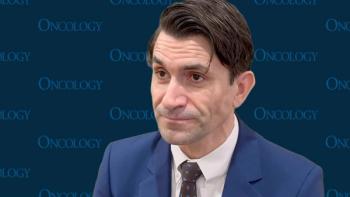
Targeted Therapies Are a Viable Option in Follicular Lymphoma Treatment
Adverse effect management is a concern for clinicians when administering follicular lymphoma treatment, and the use of targeted pathways may help mitigate them.
At a recent Around the Practice® hosted by CancerNetwork®, Jennifer L. Garson, PA-C, reviewed the current treatments that may impact the standard of care in follicular lymphoma. Specifically, she focused on the use of targeted treatments as a potential option.
Garson, a physician assistant from Rush Health in Chicago, said she prefers the use of these targeted therapies because they carry less toxicity. When patients come in for treatment, they want to maintain a good quality of life, so finding the right treatment combinations could be vital.
With Garson’s focus in the hematologic space, she identifies the need for a change in the standard of care to improve overall survival as well as progression-free survival. With the changes in response and reductions in toxicity, this will be a good marker of an impact on the field.
Transcript:
In the discussion of the impact of the standard of care in follicular lymphoma over the past few decades, there’s been a lot of changes, which started initially with rituximab [Rituxan] coming to market, which changed the overall and progression-free survival for these patients with this uncurable low-grade lymphoma. Since then, we’ve come to find other targets within the B-cell pathway that we can look at in treating this disease. We’ve overcome a lot of the challenges in treating follicular lymphoma; we conventionally had chemotherapy-based treatments only, and now [we] have targeted therapies that carry a lot less toxicity [and are] sometimes more convenient for patients. Some of our oral therapies, as well as some of our infusion therapies that have defined courses of treatment, or even if they [have] indefinite courses of treatment, carry good safety and good overall [adverse] effect [AEs] profiles.
Moving forward in the treatment of follicular lymphoma, the big thing we all want to see is better response rates as well as complete response rates, in addition to the duration of response. For a lot of patients, once they move out of first-line treatment, we know that it’s just moving into second-, third-, or fourth-line options, and for some of these patients, cellular therapy, like stem cell transplant or CAR T-cell therapy, is not in the cards. Finding something where we can get a good response and keeping that response for more than 10 months, 12 months, or 18 months, and looking at progression-free disease for a lot longer and offering therapy is what we’d all like to see for those patients with follicular lymphoma.
Newsletter
Stay up to date on recent advances in the multidisciplinary approach to cancer.
















































































